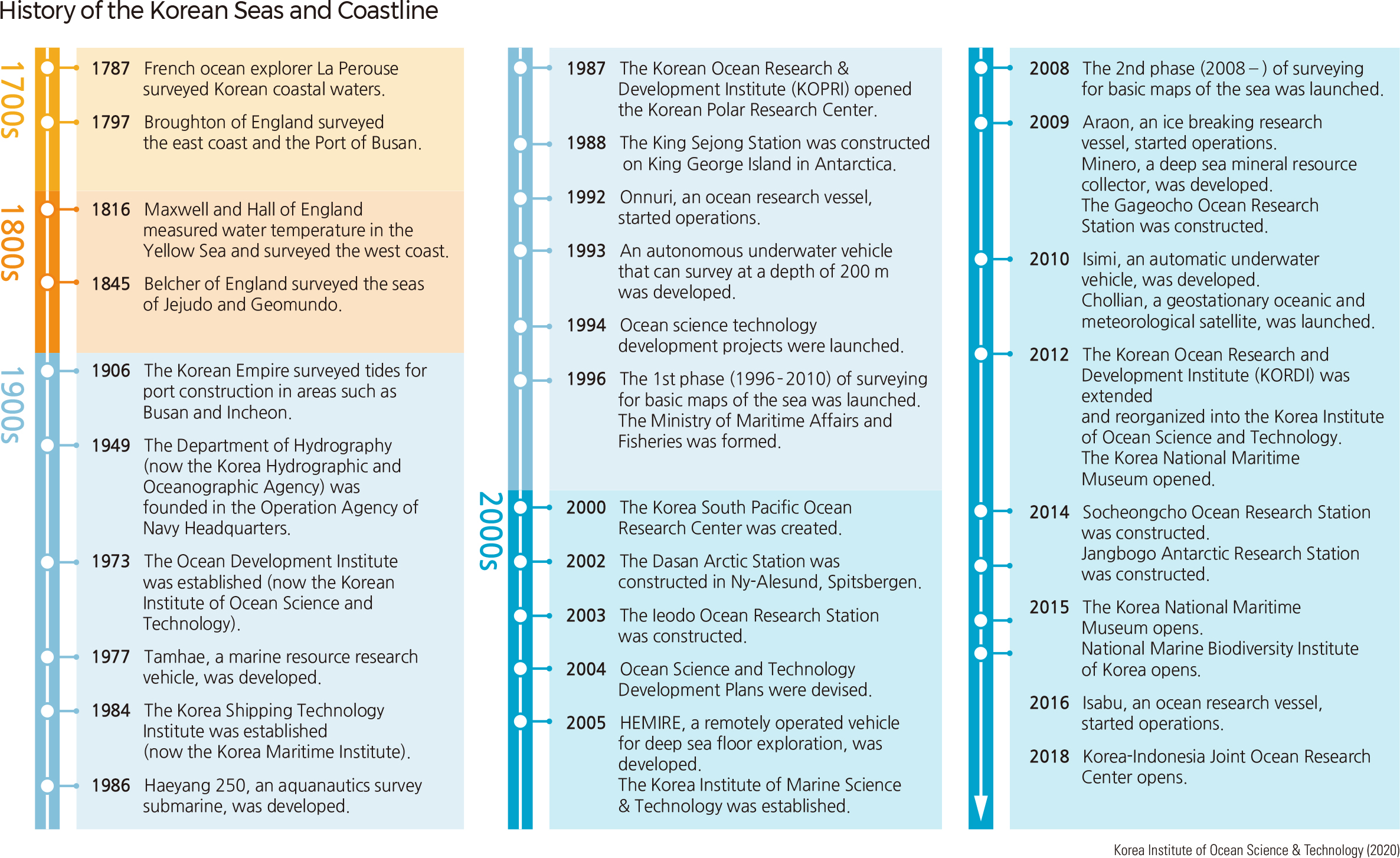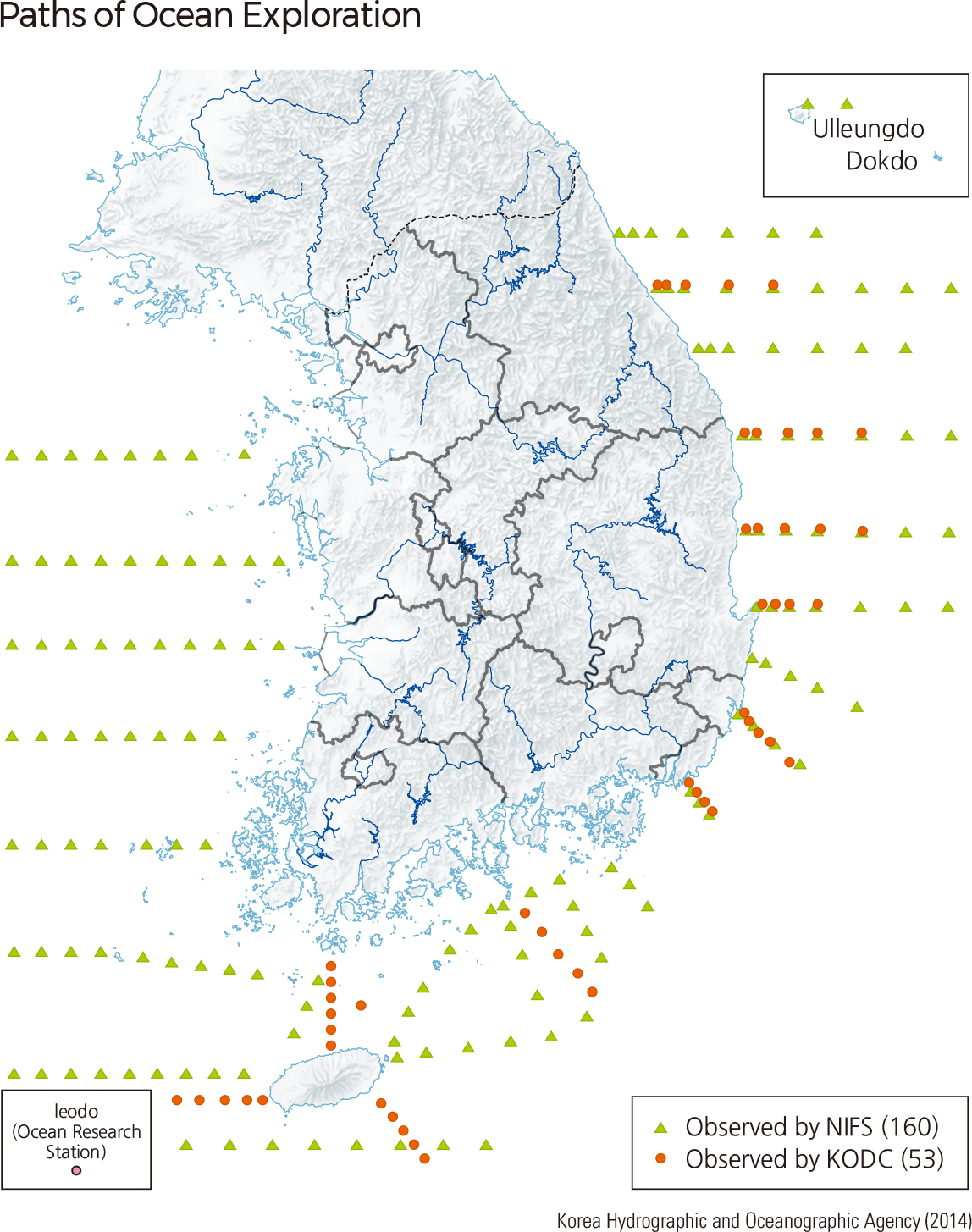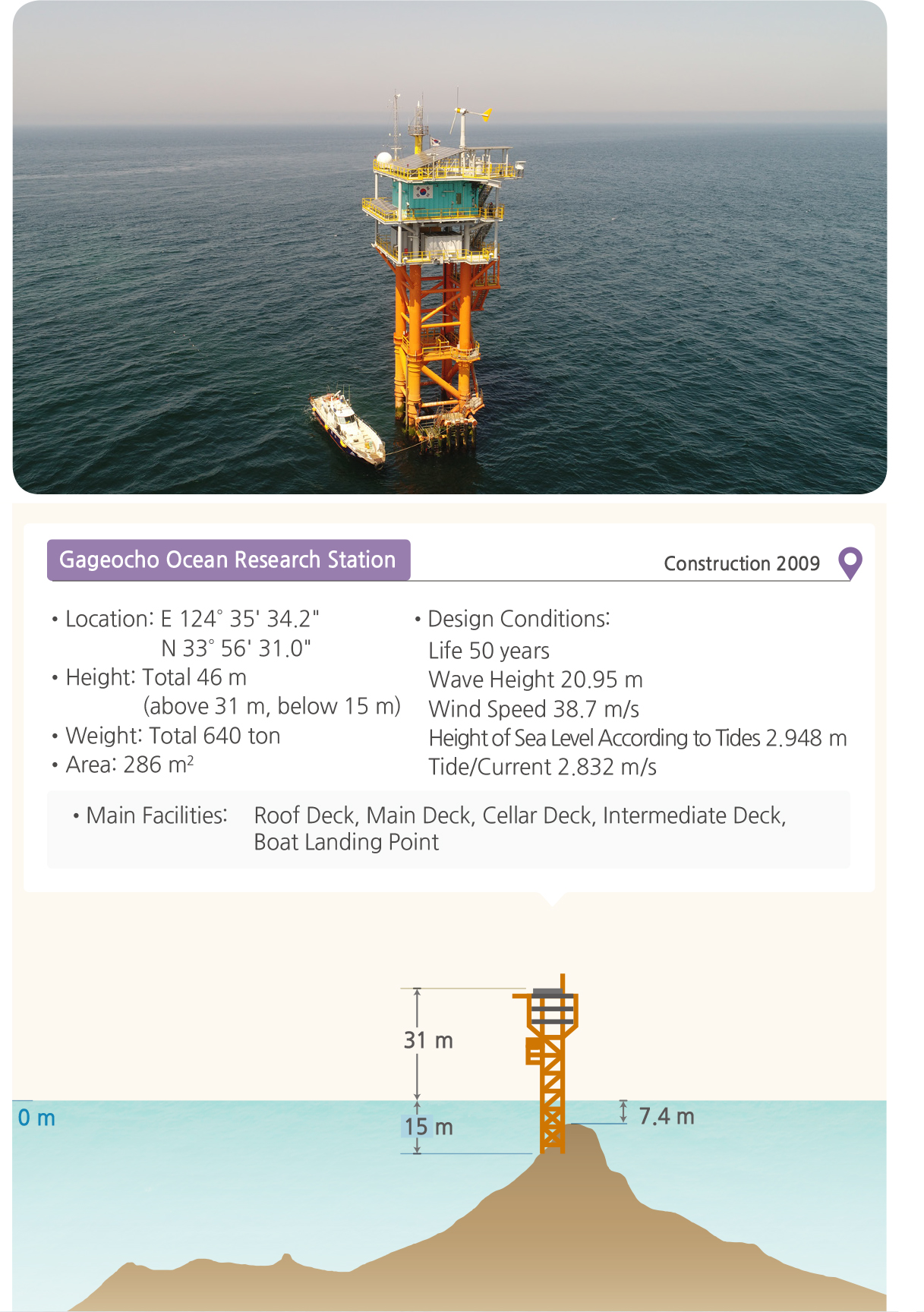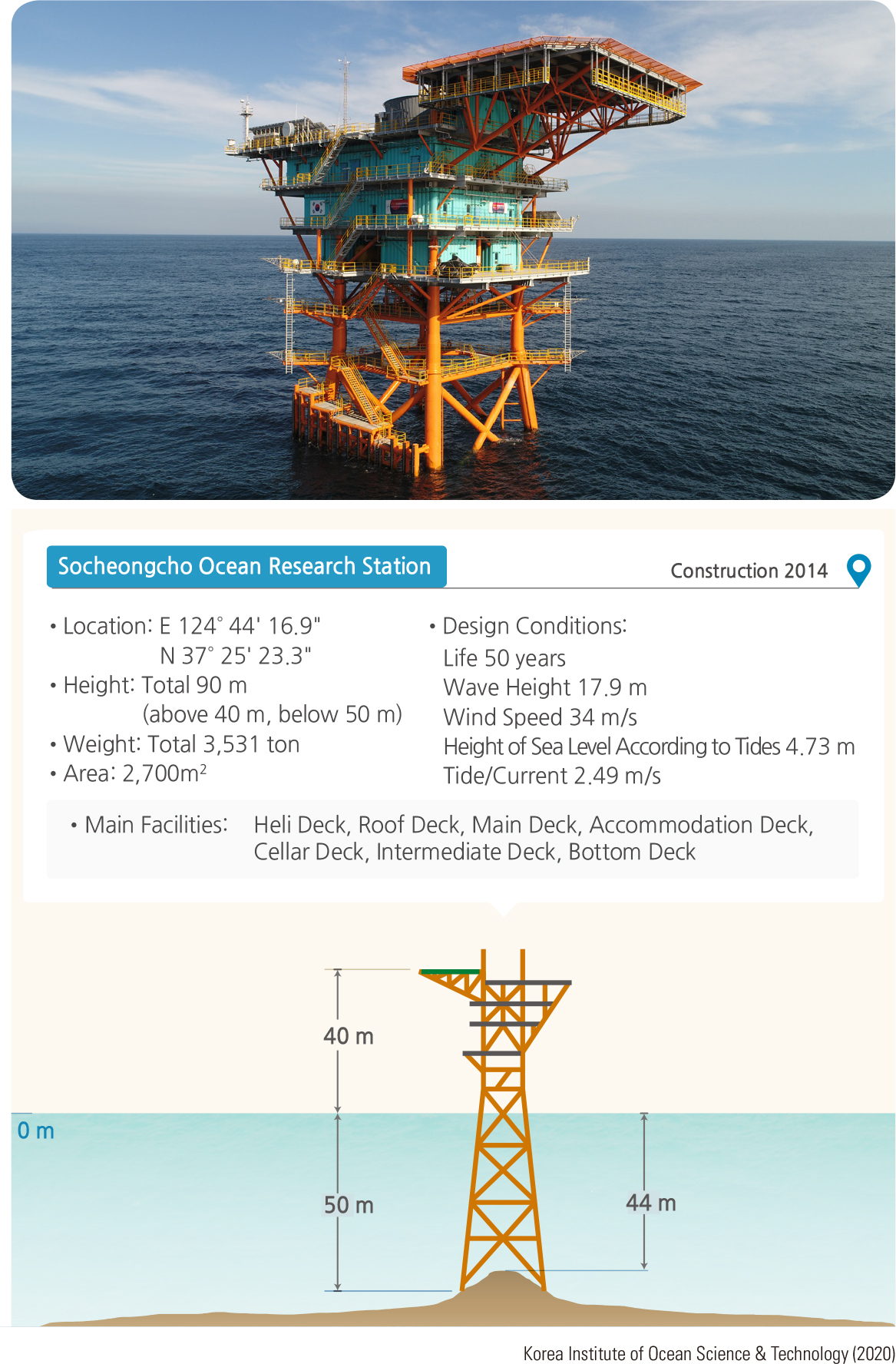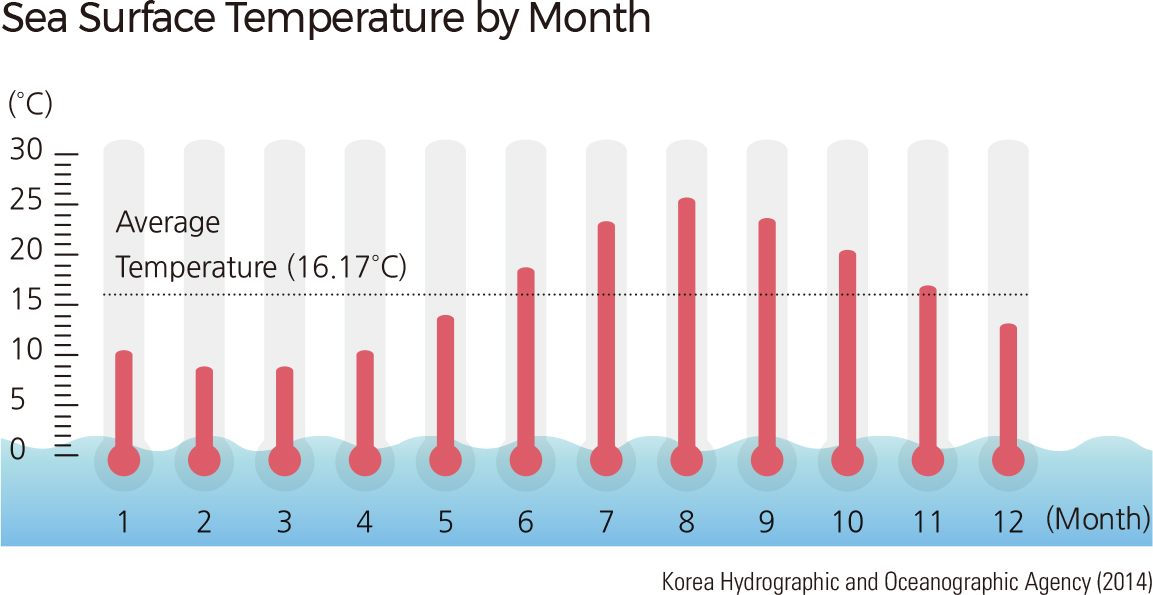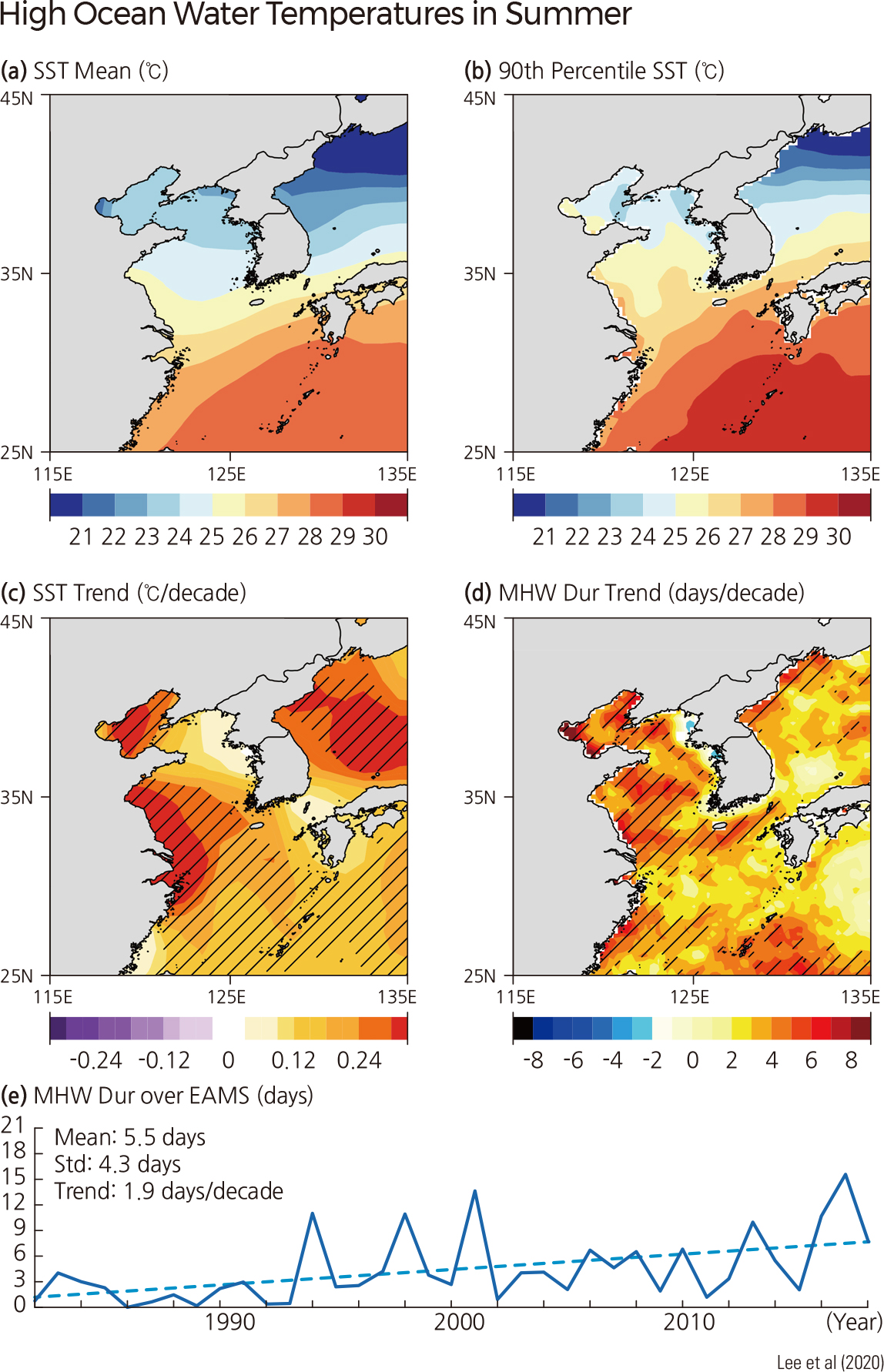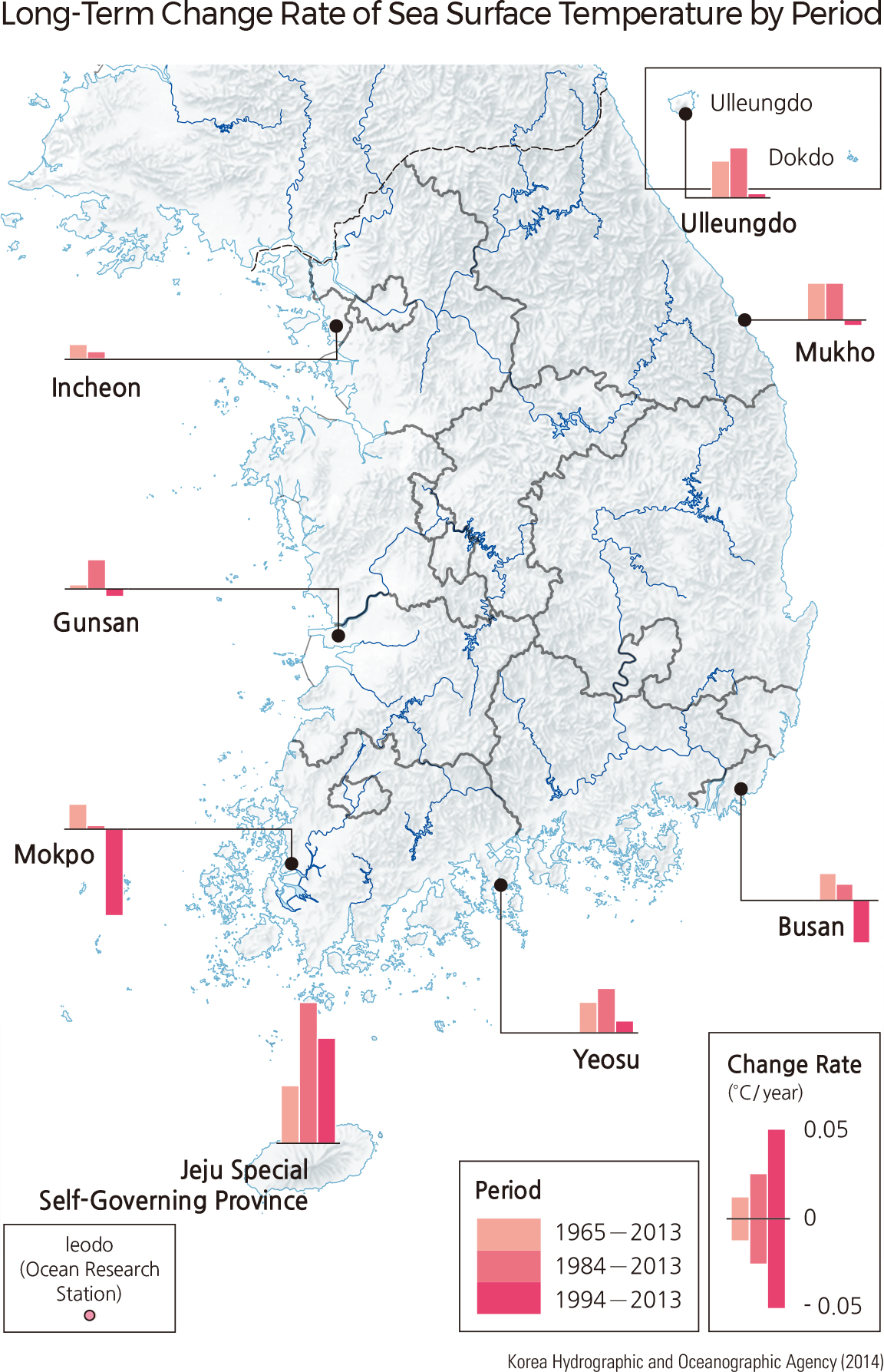English II 2020
In the Yellow Sea of Korea, comprehensive marine science bases are established to observe various marine and meteorological environments. These bases, built on a shallow reef with a steel structure, are located in Socheongcho on the central coast of the Yellow Sea, Gageocho on the southern coast of the Yellow Sea, and Ieodo Island near the East China Sea at the southernmost tip of the EEZ. Socheongcho is a reef located about 20 nautical miles from Socheong-do, Ongjin-gun, Incheon. Gageocho is a reef located about 25 nautical miles west of Gageo Island in Sinan-gun, Jeollanam-do. Ieodo is an underwater reef at the southernmost tip of Korea's EEZ, located 80 nautical miles southwest of Jejudo, 149 nautical miles from Dori Island in Japan, and 155 nautical miles from Seosandao, China. The data observed at the comprehensive marine science bases include physical marine factors such as tide level, wave height, wave period, wave direction, water temperature, and salinity; meteorological factors such as temperature, cloudiness, relative humidity, atmospheric pressure, and insolation; and atmospheric factors such as fine dust. The Korea Hydrographic and Oceanographic Agency is in charge of the operation of all comprehensive marine science bases. However, the Korea Institute of Ocean Science and Technology (KIOST) oversees operations that require more advanced technological equipment.
In recent years, damage to marine ecosystems and fisheries has increased due to high ocean water temperatures caused by global warming. Each sea area has a different sea surface temperature. If the sea surface temperature at each point exceeds the 90th percentile of the average sea surface temperature over the past 30 years and lasts for more than 5 days, it is defined as high water temperature. According to the sea surface temperature data for the past 30 years, temperatures in the 90 percentile of each point were 1 to 2 degrees higher than the 30-year average sea surface temperature in summer (Figure a and b).
During the 37 years from 1982 to 2018, average sea surface temperatures in summer rose mainly in the East China Sea and the open sea of the East Sea. By contrast, high water temperature increased markedly in the Yellow Sea and South Sea (Figure c and d). In all seas of East Asia, the annual number of days of high water temperature in summer (June to August) increases by 1.8 days every 10 years (Figure e). The increasing trend in the South Sea and the Yellow Sea is steeper. |
